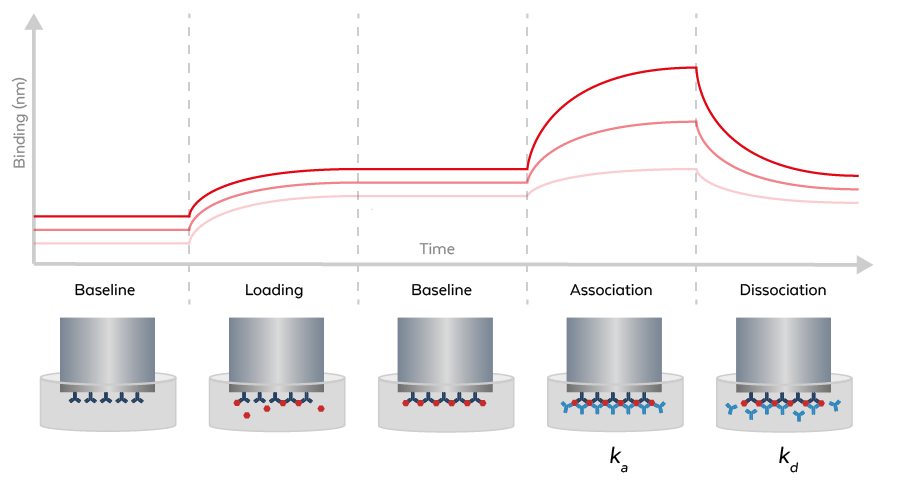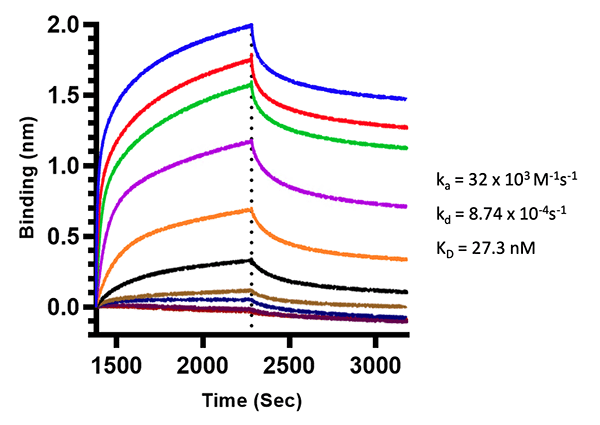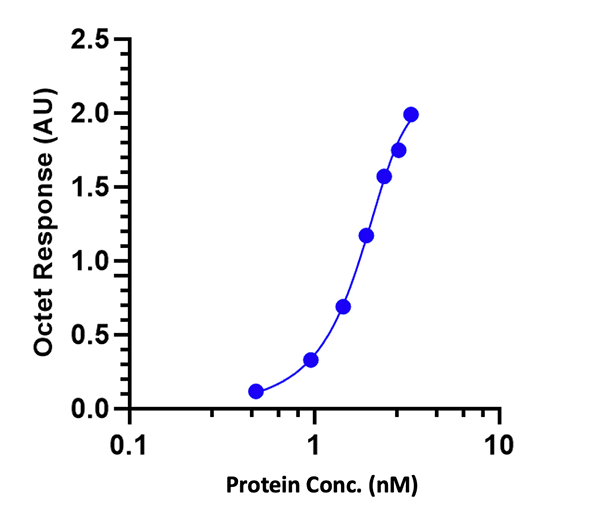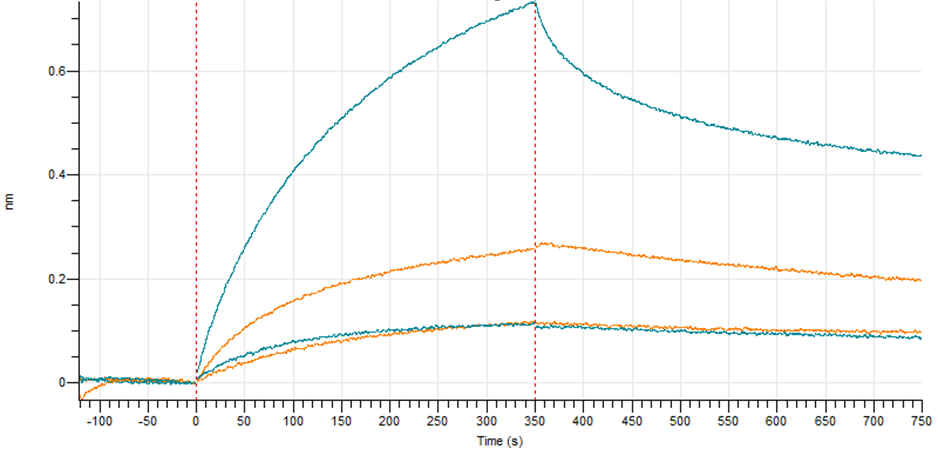Bio-Layer Interferometry Services
Bio-Layer Interferometry Services
Octet® System
Rockland can help you select the best antibody or protein for your assay by providing label-free analysis using the Sartorius Octet® System. Use it as part of your assay development program or as a stand-alone service.
Octet® Bio-Layer Interferometry
The label-free Bio-Layer Interferometry (BLI) technology enables the direct detection of specific proteins and other biomolecules in complex mixtures like crude cell culture supernatants and lysates. BLI uses optical-based biosensors to convert biological binding reactions into signals without the use of a detection label. This allows real-time monitoring of changes that occur when an analyte binds to a ligand immobilized on a biosensor surface and eliminates the need to manipulate individual assay components. Eliminating the need for extra labeling or tagging methodology decreases the amount of material needed and greatly shortens timelines. The system can be used for a wide range of analyses including kinetic analysis, quantification of IgGs and other proteins, immunoassay development, epitope binning, and ligand binding assays.


Kinetic Analysis
The Octet® system allows the measurement of binding events in real-time to determine on rates (ka), off rates (kd), and affinity constants (KD).
Figure: Binding mode and kinetic analysis of antibody-antigen binding. Using Octet®, a series of nine (9) concentrations of mouse anti-antigen antibody (3.0 nM-2.2 µM) were immobilized on an AR2G biosensor and exposed to 20 µg/ml antigen protein. Each colored curve represents the acquired signal of its antibody concentration. The interaction features reproducible duplicate injections and fits to a 1:2 bivalent kinetic model. The values for association constant (ka=32x103M-1s-1) and dissociation constant (kd=8.74x10-4s-1), and affinity constant (KD=27.3 nM) are depicted in the graph.
Protein Quantification
Faster and as accurate as ELISA, the Octet® system directly measures the presence of specific proteins and other molecules in solution with minimal interference from complex matrices.
Figure: Steady-state signals (blue-filled symbols) are fitted to a bivalent binding site model (blue line). A 4-parameter non-linear regression curve fit was used for the integration of the data.


Antibody Binding Pair Evaluation
BLI can also be used to help rapidly identify antibody binding pairs for use in other assays such as ELISA and lateral flow assays (LFA).
Figure: Screening of candidate antibodies for antigen capture and detection in a sandwich assay. Of the antibodies tested, one antibody demonstrated superior performance compared to the others and was selected for further characterization and development.
Interested in bio-layer interferometry services?
We can help move your program forward—contact us to find out how.